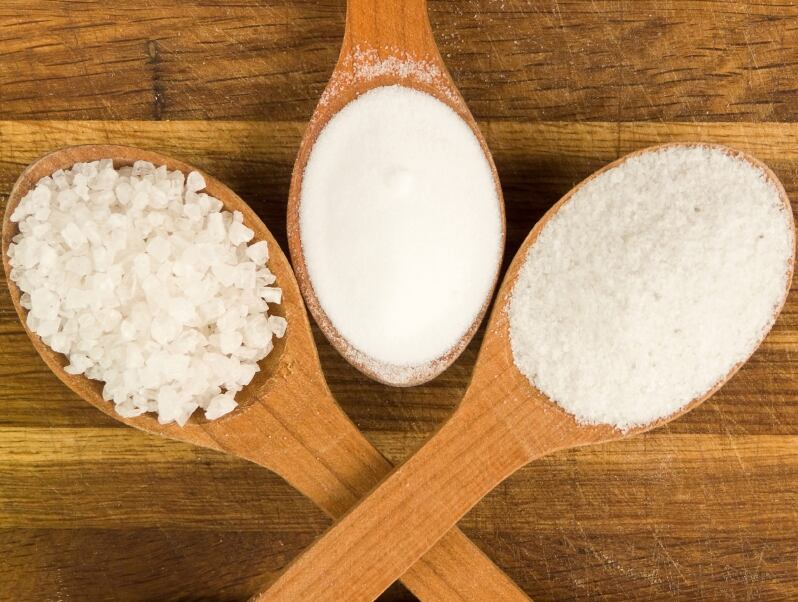The study indicates that certain polysaccharides would not change the way the prawn tastes, feels, or looks to the consumer, providing a real possibility of a viable alternative to the use of phosphates.
Polysaccharides used in this study were also found to be less expensive than phosphates, providing value to the processor and consumer.
Although effective, phosphates are expensive, need to be listed on a food label and overuse can often lead to a higher product cost for consumers.
The fruit of the sea

Researchers from the University of Florida's Institute of Food and Agricultural Sciences wanted to look into alternatives to phosphates that were able to lock in the prawn’s texture and savoury flavour.
Fresh medium white prawns and medium brown prawns were used in this research. According to one study, Atlantic white prawn were deemed popular because of their sweet taste and good nutrient profile as a good source of protein, niacin, iron, phosphorus, zinc and vitamin B12.
Polysaccharides exhibited similar characteristics to phosphates at a relatively low cost.
Polysaccharide blends included a 0.5% fibre colloid solution isolated from citrus peel, an 8% pectin solution, a 0.5% xanthan gum solution, a 1% carboxymethyl cellulose (CMC) solution, and conventionally used 4% sodium tripolyphosphate (STP). These experimental treatments were compared to a distilled water control group.
Additional studies that froze, boiled and oven dried the prawns were performed to determine how moisture retention in shrimp differed using these different treatments. Water activity was also measured to determine any potential differences in shelf life.
The findings showed that moisture loss was most significant when the white and brown prawns were frozen.
The prawns treated with 4% sodium tripolyphosphate (STP) and the prawns treated with 0.5% fibre colloid lost the least amount of moisture due to freezing. Prawns treated with 0.5% xanthan gum and the prawns treated with distilled water performed similarly.
The prawns treated with 1% CMC was found to have performed worse than the control. Lastly, the prawns treated with 8% pectin lost significantly more water than the prawns treated with 1% CMC.
It was a similar story for the brown prawns. The prawns lost the least amount of moisture in the 0.5% fibre colloid solution followed by the 4% STP, distilled water, 8% pectin, and finally, the prawns treated with 2% pectin.
STP and the fibre colloid are known to help protect biological tissue from freezer damage, the study’s authors explained. This could be why STP and the fibre colloid prevented the most amount of moisture loss due to freezing.
“However, given that the fibre colloid is obtained as a natural by-product of the citrus industry, there may be some variability associated with this measurement,” the study noted.
The results also demonstrated that pectin did not work under freezing conditions since the pectin treatment lost the largest amount of moisture due to freezing.
Cost estimate

The researchers also provided a cost comparison of each moisture retention agent (MRA) as a way to assess their competiveness with phosphates economically.
For each of the MRAs studied, the pricing was based on a 22 kg shipment and while the team acknowledged the alternative MRAs were more expensive on a price per pound basis than STP the inclusion levels of the fibercolloid, XG, and CMC were lower.
Based on an order of 22 kg of STP, the researchers believed an order of 2.9 kg of fibercolloid, 45 kg of pectin, 5.6 kg of CMC, and 2.8 kg of XG would be needed to treat the same amount of prawns.
In adjusting the price to purchase concentrations effective enough to treat 45 kg of prawn, the researchers found that the sodium tripolyphosphate would cost €64.40, the fibercolloid would cost only €10.20, the XG would cost €26.20, and the CMC would cost €51.80. Therefore, the fibercolloid, XG, and CMC all end up being less expensive than the STP in theory.
“The polysaccharide treatments were also found to be competitive on a cost basis,” the team concluded.
“This study demonstrates that from an applied perspective, polysaccharides may be used as phosphate alternatives, although subsequent research is needed to determine the mechanism of moisture retention by polysaccharides in prawns and other fishery products.”
Source: Journal of Food Science
Published online ahead of print, DOI: 10.1111/1750-3841.13242
“Polysaccharides as Alternative Moisture Retention Agents for Shrimp.”
Authors: Michael J. Torti, Charles A. Sims, Charles M. Adams and Paul J. Sarnoski
